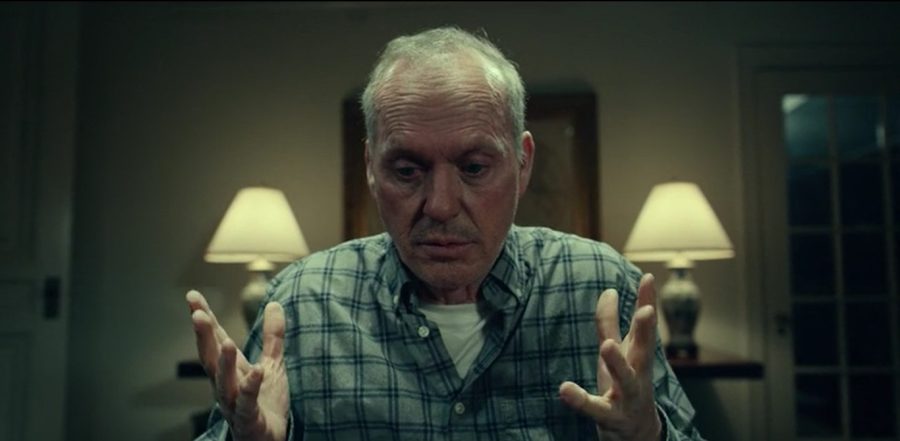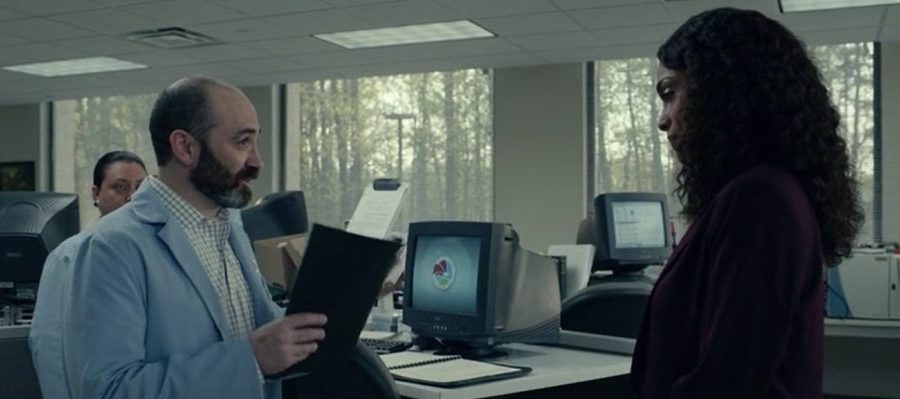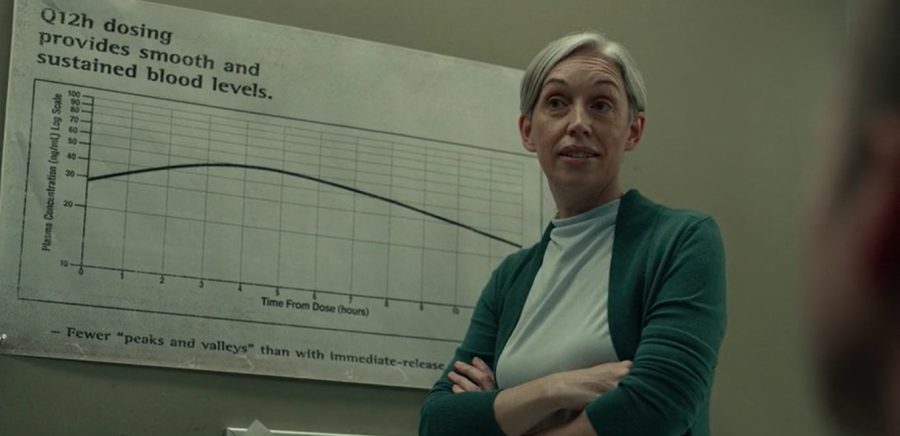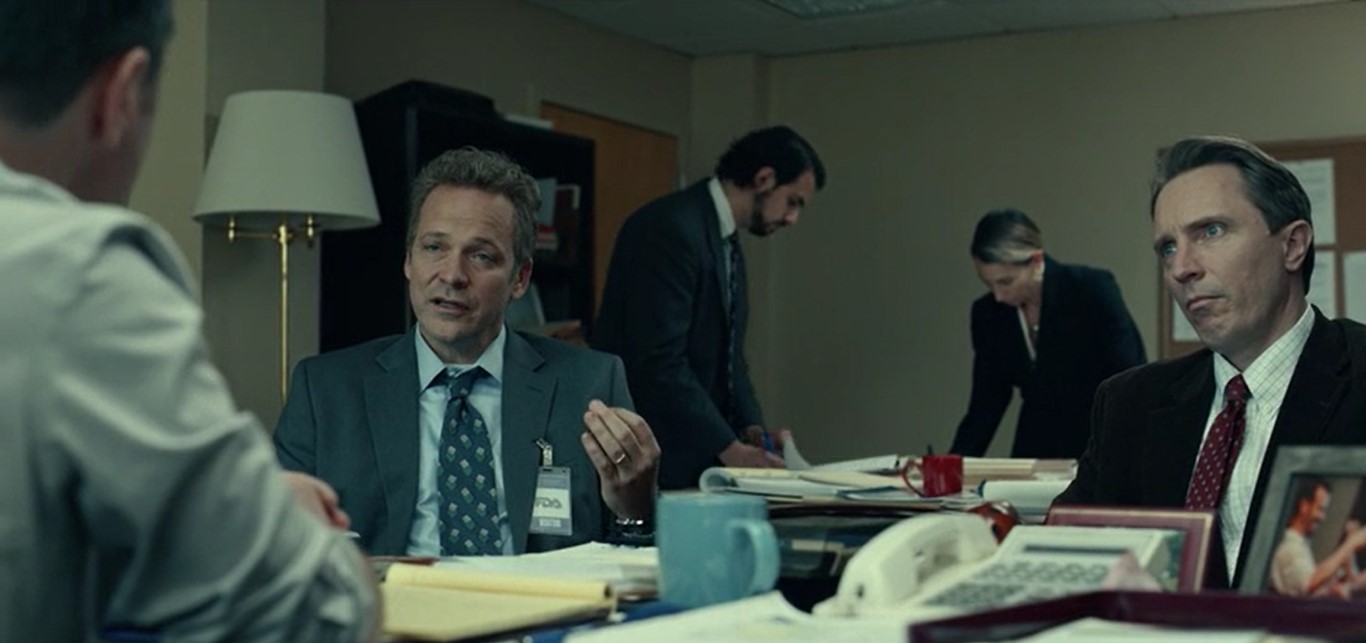In the sixth episode of ‘Dopesick,’ Purdue Pharma’s basket of lies finally begins to crack as DEA Agent Bridget Meyer’s aggressive approach seems to be producing some results. However, Richard Sackler and his team continue to use every method at their disposal to curb the growing risk against their production and distribution of OxyContin.
The episode ends on a compelling note that teases Purdue Pharma’s downfall, but how exactly will that come to fruition? If you are wondering the same, allow us to provide some clarification about the episode’s events. Here’s everything you need to know about ‘Dopesick’ episode 6 ending! SPOILERS AHEAD!
Dopesick Episode 6 Recap
The sixth episode is titled ‘Hammer the Abusers.’ It opens in 2000 with US Attorney of Maine, Jay McCloskey, sending letters to doctors and holding a press conference to highlight prescription drug abuse in the country. Richard and his team decide to hold a meeting with McCloskey. Dr. Samuel Finnix has been attending rehab, but after listening to other addicts at the center, he grows concerned that he will relapse soon after getting out. That is what happens, and Finnix signs up for Methadone treatment to battle his addiction.

Meanwhile, Betsy throws herself into religion and other activities to deal with her addiction but finds herself spiraling out when she is reminded of her ex, Grace. At a party to celebrate Purdue selling a $1 billion worth of OxyContin, Billy begins to have doubts about selling the drug.
Moving forward to 2002, Bridget continues her investigation into Purdue Pharma, but it drastically affects her personal life. She and her husband are taking couple’s therapy and resolve to make things work. Bridget meets with the FDA and is assured that they will take action against Purdue if she can prove that their drug is faulty and lethal even when used as prescribed. The DEA agent then promptly begins the search for proof.
Jumping to 2005, Rick Mountcastle and Randy Ramseyer are celebrating their three-year anniversary working on the Purdue case. After the setback of losing their whistleblower, they try to figure out an alternative method to implicate Purdue. Mountcastle tries to contact McCloskey while Ramseyer speaks with doctors busted for the overprescription of OxyContin. Ramseyer learns that Purdue used blood charts to misdirect the doctors into believing that the drug was safe. The episode ends with Bridget making significant progress in her investigation.
Dopesick Episode 6 Ending: Is OxyContin Lethal? Does Bridget Find Proof of It?
In the episode, Bridget is faced with the monumental task of proving that OxyContin is lethal even when used as prescribed. Therefore, she tries to investigate the reported deaths caused by the drug to deduce that OxyContin is, in fact, a lethal drug. However, the autopsy reports do not indicate the same. The patients’ bodies also contain remnants of other drugs, thereby making it difficult for the doctors to claim that the deaths were caused by OxyContin alone.

Despite the setback, Bridget is intent on finding proof but is shaken by the death of the teenager she had met in a parking lot. The teenager died due to an overdose, and Bridget mourns him. The loss makes Bridget’s determination to take down Purdue stronger, and with a slight tweak to their research method, Bridget finds the results she needs.
She realizes that OxyContin is prescribed with a combination of non-lethal drugs approved by the FDA. Thus, by separating the combos, the doctors generate a new report that shows the actual number of deaths caused by the drug. Bridget learns that 98% of the deaths were caused by using OxyContin as prescribed. The report puts Bridget within touching distance of incriminating Purdue. However, from earlier episodes we know, her attempts will fail, and it remains to be seen just how Purdue manages to bypass such a strong claim against them.
How Is Purdue Deceiving Law Enforcement?
In the episode, we also learn a little more about how Purdue is evading the law and deceiving regulatory authorities such as the FDA. As it turns out, the blood charts used by the company are providing misinformation. Ramseyer and Mountcastle learn from a data analyst that the company manipulated the chart’s scale to depict that their drug had a different effect than other opioids. The same is corroborated by an FDA employee working in the approvals division.

On the other hand, the duo’s attempts to contact McCloskey end after they find out that the former US attorney now works for Purdue Pharma. The FDA employee claims that the regulatory authority did not approve the blood charts, thereby hinting that Purdue paid to get the approval. The company has been buying off everyone who could cause a problem, including attorneys and regulatory bodies. It stands to show how Purdue is using greed to protect itself.
Read More: Where Was Dopesick Filmed?


You must be logged in to post a comment.